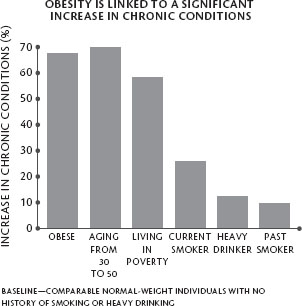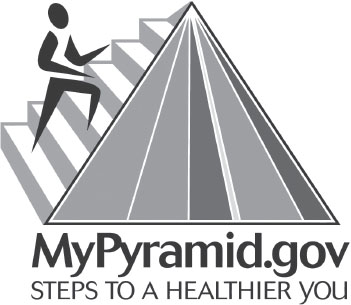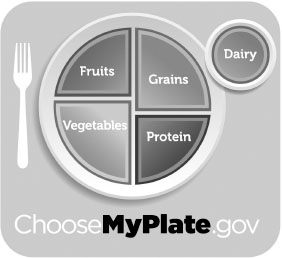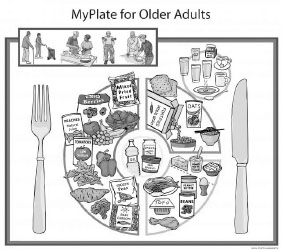Live Long, Die Short (24 page)
Read Live Long, Die Short Online
Authors: Roger Landry

Source:
RAND Corporation,
The Health Risks of Obesity.
It is nutrition, however, that is the overarching concern here, for it encompasses situations of dietary imbalance, like obesity, and even more importantly, the nourishment necessary to enable us to perform at our best, to be resilient, and to ward off threats to our health. Our core needs are about nourishment. Our approach to authentic health is not about deprivation, but about providing for our core nutritional needs.
For most of the time that man and his immediate primate ancestors have inhabited the earth, he ate the foods that provided the most energy for the least amount of physical energy expended—i.e., foods that were readily available. Therefore, the diet of our ancestors consisted mostly of fruits, wild vegetables, nuts, fish, and small amounts of meat (plus and including beans, flowers, gums, fungi, stems, shellfish, eggs, small mammals, fish, frogs, turtles, and other similar available foods). These foods had less available energy (calories) per gram and more vitamins, minerals, amino acids, and fiber than foods we eat today. Sugar, other than what naturally occurred in the foods they foraged, did not exist. Since sophisticated hunting implements and domesticated animals are relatively new phenomena in our history, meat was available primarily from small animals or as remnants from predator kills. In either case, game animals would have been less fatty than our modern-day animals, and what fat there was would have been less saturated.
9
It is not a leap, therefore, to propose that human physiology—which evolved during this period that constitutes a vast majority of the time we have walked the earth—requires these types of food in order to function at its best. Hence the USDA nutritional recommendation to eat at least five helpings of fruits and vegetables daily. The recent resurgence of interest in the Paleo diet is based on the belief that we do indeed require foods eaten by our distant ancestors to be healthy.
Basically, because our ancestors had limited access to food and because survival was on the line, they would readily eat high-calorie food, like fats, whenever they encountered it, which was hardly ever. They were, and we are, “wired” to eat high-calorie food whenever it’s available. And so it is also not difficult to understand the modern-day plague of obesity when we now have ready access to food much higher in caloric content and from sources our bodies are not designed to deal with. Foods with elements unknown to our ancestors, such as trans fats (found in some chips, crackers, and pastries), simple carbohydrates (soda, candy, and pastries are abundant sources), and added sugar, compound the problem.
Such food, rare to our ancestors, is not only available every hundred yards in some cities but is also very inexpensive. In fact, this is the first time
in human history that the poorer populations (at least in the United States and other developed countries) are overweight rather than thin. Fast food is cheaper and high in fat and calories. So, large segments of the population continue this pattern of eating what gives the highest energy content for the least amount of physical effort. Additionally, our modern cultural custom of eating at three prescribed times of day is dramatically different from that of our ancestors, who ate frequent small meals depending on availability. Those meals were ridiculously small compared to today’s supersized ones. So not only the quality of our food, but also the quantity, differs greatly from that which guided the evolution of our physiology.
Last, physical movement was an absolute requirement of the daily activities of our ancestors. Therefore the expenditure of calories was not something done in one’s spare time but a nonnegotiable necessity.
So, do we have to wonder why we are obese? Why we are plagued by cardiovascular diseases, cancer, dementia, and diabetes? We have departed greatly from the foods, eating patterns, and activity level that determined our current physiology. Evolution is a much slower process than cultural change and the development of high-calorie fast food. It’s not that we must return to our ancestral diets, but we can use them as a general guide. Eating smaller portions, more often, perhaps six times daily, with fruits, vegetables, nuts, and beans being the core of our diet—this alone can serve as a huge step forward to lowering health risks, enhancing our nutrition, and achieving authentic health.
Aristotle said life isn’t worth living without chocolate. Actually, he didn’t, but he did say “All things in moderation,” and those are words to abide by if you want to live well, and age well. We should mix it up and sample carbohydrates, proteins, fats, but do it more judiciously. Realizing that thirst is a late sign of dehydration and that dehydration raises risk of clots, strokes, and heart attacks, we should commit to keep ahead of dehydration with enough non-caffeinated, nonalcoholic beverages. (Aristotle would have undoubtedly approved of alcohol and caffeine—again, in moderation.) So remember to drink water-based drinks
before
you’re thirsty.
The United States Department of Agriculture (USDA) has for over one hundred years issued nutrition guidelines. These dietary recommendations, like our knowledge of what constitutes healthy eating, have evolved over that century. For the last twenty years, the USDA’s guidance has been in the form of a food pyramid, and the most recent, MyPyramid, was unveiled in 2005 and looked like this:

It was then customized for older adults as MyPyramid for Older Adults:

Because these pyramids were thought to be too abstract, in June of 2011 the guidance changed forms and became MyPlate:

Source:
United States Department of Agriculture,
http://www.choosemyplate.gov
.
MyPlate was intended to be simpler and basically recommended that our diet consist of 30 percent vegetables, 30 percent grains, 20 percent fruits, and 20 percent protein, with a small circle indicating dairy. Additional guidelines are:
- “Make half your plate fruits and vegetables.”
- “Switch to skim or 1% milk.”
- “Make at least half your grains whole.”
- “Vary your protein food choices.”
The guidelines also recommend portion control while still enjoying food, as well as reductions in sodium and sugar intake.
10
In November of 2011, these guidelines were customized for older people by the Jean Mayer USDA Human Nutrition Research Center on Aging at Tufts University, and the result was MyPlate for Older Adults.

Source:
Jean Mayer USDA Human Nutrition Research Center on Aging at Tufts University, November 2011.
MyPlate for Older Adults focuses on the unique nutritional and physical-activity needs associated with aging and is intended to be a guide for healthy older adults who are living independently and looking for examples of good food choices and physical activities. By emphasizing the consumption of fruits, vegetables, whole grains, and multiple protein sources beyond just meat, as well as the need for physical movement, MyPlate for Older Adults is a close cousin to the diets of our hunter-gatherer and, to some extent, agrarian ancestors. No surprises there, since, as we have stated so strongly in
part I
of this book, our nutritional and health needs were, we believe, established during the eons of time that predated most of our history as a species and constitute our absolute basic, or authentic, requirements.
We have so much information today that suffering from preventable diseases is all the more tragic. We have learned much about raising our odds against diseases that formerly left us powerless. Take colon cancer. I’m at higher risk since my father had colon cancer. Yet with so much more knowledge about what foods raise or lower the risk of developing it, and with the newer tools for early detection and effective treatment against this
disease, which is itself a slow grower, the odds are now hugely in my favor against dying of it … as long as I learn all I can about colon cancer, eat better, work with my doctor, and get the recommended screening. And it’s the same with so many diseases that are responsible for lower quality—and quantity—of life. So, getting those regular physical exams, the screening tests and immunizations, in addition to making the lifestyle shifts recommended in these Ten Tips, can indeed begin to stack the deck in your favor.
Mary knows that if you’re truly living, some of life’s hits are unavoidable; what is avoidable, however, is having those hits become the beginning of your end. She is ninety-one by the calendar, but at least a decade younger to the eye and all who observe her seize each day. Mary confesses she was treated like a princess as a child and often wonders how she was able to weather the loss of three husbands and significant financial challenges in her earlier life. And not only to weather, but to continue to thrive. Sitting with her as she tells her story, I have no doubt of the source of her indomitable resilience. She has continued to grow even as she enters her tenth decade of life.
“We have lots of parts and all these parts need to be nurtured.” Still driving, Mary is not a prisoner of her apartment. She is, rather, frequently spotted, actively engaged within the retirement community where she lives, meeting with people who are considering moving in. “I love meeting and greeting people.” Or bringing her signature chicken soup to a neighbor who’s ill. Or meeting with the community finance committee. This is right in line with how she lived her life when she was “younger.” After “retiring,” she volunteered at her city’s conference center for over fifteen years, in order to “to be with people.” She tells me, “Even if you have quite different ideas on things, you can still connect and have a meaningful relationship.” She admits not being an intellectual, but reads to keep on the news of the world and “tries to make sense of life,” “taking the good parts of religion to find strength, hope, peace, and spiritual connection.” She recently discovered that a local school was in need of teaching assistants and will pursue that possibility. Mary understandably has a soft spot for widows and does all she can to support new widows in her community.